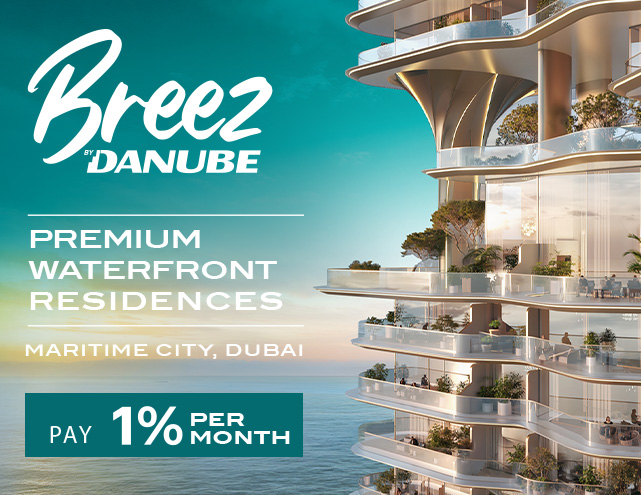Dubai’s property market is abuzz with a critical question: which Dubai communities will benefit most from the new Etihad Rail? In this article, we break down the neighbourhoods poised for transformative growth as the Etihad Rail project reshapes connectivity, amplifies investment opportunities, and redefines residential and commercial landscapes across the UAE. Read on to discover which areas stand out for investors seeking to capitalise on this landmark infrastructure development.
Etihad Rail: Connecting the Emirates and Shaping the Future
The launch of the Etihad Rail project marks a defining moment in the UAE’s infrastructure ambitions, forging a direct rail line that will link Dubai seamlessly to Abu Dhabi, Sharjah, and key Northern Emirates. This new spine of connectivity promises not only to ease inter-city transport but also to stimulate real estate activity substantially. As Etihad Rail’s passenger and freight networks come online, communities surrounding planned stations in Dubai are poised for the greatest benefit, with anticipated enhancements to accessibility, convenience, and overall desirability for both residents and commercial tenants.
Strategic investors recognise that major infrastructure projects like the Etihad Rail consistently serve as catalysts for significant property value appreciation, especially in emerging neighbourhoods that transition from peripheral zones to central nodes of activity.
The Genesis of Connectivity: Understanding the Etihad Rail Project
Etihad Rail has been carefully mapped to pass through logistics hubs, business districts, and mixed-use developments. Dubai’s anticipated Union Station, located in the heart of Downtown near DIFC and the World Trade Centre, is set to become a key interchange. This proximity will make adjacent communities attractive for both residential and commercial investors.
Beyond the city centre, areas like Dubai South—already positioned as a logistics and aviation hub—are expected to evolve rapidly thanks to their direct rail links. Further, Dubai Investments Park (DIP), Jebel Ali, and surrounding industrial parks along the planned route are also set for a surge in activity and capital inflows.
Example: Dubai South and DIP – Gateways to Growth
Dubai South’s integration with Etihad Rail will bolster its appeal. The community already benefits from the proximity to Al Maktoum International Airport and Expo City. With the addition of rail connectivity, Dubai South is projected to attract significant business relocation and residential demand, reinforcing its status as a major investment hotspot [source].
How Etihad Rail is Electrifying UAE Property Markets: A Deep Dive
The impact of Etihad Rail on the Dubai property market is clear: improved mobility drives demand for well-connected homes and commercial spaces. As travel times shrink and access broadens, communities along the network—particularly those previously considered on the urban fringe—are seeing renewed investor interest. According to Gulf News, “Communities such as Dubai South, Al Furjan, and Jumeirah Village Circle are particularly well-positioned to benefit,” with improved connectivity not only enhancing lifestyle and accessibility for residents but also strengthening investor confidence and driving demand. According to leading property consultancies, enhanced connectivity often precedes both price appreciation in residential zones and higher occupancy rates in commercial districts.
Mixed-use developments are expected to perform well, as they benefit from the convergence of flexible office spaces, retail, and modern residential offerings. Notably, areas like JLT, Business Bay, and the upcoming zones around Dubai’s Union Station may experience the highest rental yield growth as Etihad Rail opens new corridors of prosperity.
Key Areas Set for Property Value Growth Along the Rail Network
Real estate stakeholders are closely watching several Dubai locations:
- Dubai South: Enhanced as a logistics and residential destination.
- Dubai Investments Park (DIP): Expected spike in industrial, warehouse, and workforce housing needs.
- Jebel Ali: Increased commercial significance, especially in logistics and warehousing.
- Union Station (Downtown, DIFC, World Trade Centre): Premium office and branded residential space may command higher premiums.
- JLT & Business Bay: Proximity to transport links and business districts to buoy rental and resale values.
These areas represent the intersection of improved infrastructure and lifestyle convenience—both of which are central to long-term capital growth in Dubai’s dynamic real estate market.
Conclusion: Navigating Opportunity with Danube Properties
To answer the central question, Dubai communities set to benefit most from the new Etihad Rail include Dubai South, Dubai Investments Park, Jebel Ali, and core city districts near Union Station and DIFC. According to DXB Offplan, properties in these areas have already seen significant value increases, with average property values rising by 13% over the last nine months and certain neighborhoods like Dubai Festival City experiencing growth of up to 18%. These neighbourhoods are positioned for enhanced value due to increased accessibility, inbound investment, and heightened demand for high-spec properties. Strategic investors should closely track development timelines and emerging inventory to make well-timed acquisitions. For tailored advice and updated inventories near Etihad Rail access points, contact Danube Properties to learn more about the best current opportunities.




